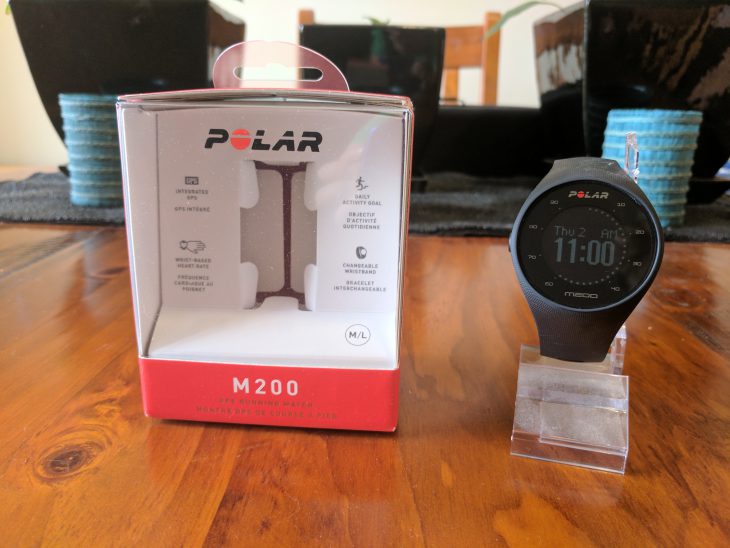
There’s a lot of emphasis on Android Wear devices here at Ausdroid, but there’s a big wide world of wearables out there and to be honest they’re pretty great. The latest is the Polar M200 which was launched last month, I took a look at the Android Wear running M600 last year, so wanted to see what Polar can do with a non-smart fitness tracker.
The Polar M200 is a GPS running watch with heart-rate monitor. It’s aimed at runners, and though it’s not got a tonne of smart features, it does pair with the Polar Flow app on your phone so you can track your activity over time. The watch itself is also similar to the higher end M600 in that it also offers a bunch of workouts it can track, but that focus really comes back to running.
At around $200 the M200 is a pretty economical choice for a GPS enabled fitness tracker, especially when compared with similarly specced devices from other manufacturers. Is it worth your $200, I’ve been using the M200 for a few weeks and it’s time to find out.
Hardware
The Polar M200 consists of a rubber watch band which the M200 core module slips in and out of. It’s a proprietary band which isn’t too bad, though it’s not quite as nice as the one supplied on the M600. It’s only available in Black or Red at retail in Australia, though you can order a new band in Yellow, White, Red or ‘Fresh Blue’ from the Polar website for $29.95. That band is rubber, and while it’s comfortable it’s also not the ‘nicest’ watchband, but it works.

The M200 module has a large, round 26 mm diameter face. The screen isn’t incredibly high resolution, Polar says that the screen has 1,342 pixels on it, and it looks blocky but it works. The text, a white on black theme, is easy to read even when you’re running. It’s a little difficult to read at night, but well, if I`m running at night, I have other issues.
The M200 has two buttons – one either side of the watch face – used for navigation and control of the UI. It’s a little hard to get used to, long press on the right hand button to select, short press to move to the next option, and use the left button to go back (or long press to end an activity).
On the underside of the watch you’ll find a USB-A connector used for data sync and charging the 180 mAh LiPo battery, though it’s a male USB-A connector so you can in theory plug it straight into a USB port in your computer, or just use the adapter supplied with the watch.
There’s also a heart-rate monitor, but the results were a bit of a miss for me. One of the biggest drawcards for me on the Polar M600 was the 6-LED heart-rate monitoring sensor on the rear. Unfortunately the M200 goes back to a less accurate 2-LED setup, which you find as a runner doesn’t give the best accuracy overall. With a 2-LED heart-rate monitor you have to wait a longer time for the heart-rate to be gauged, which for runners is less helpful as you require up to date information to get the best results out of your workout.
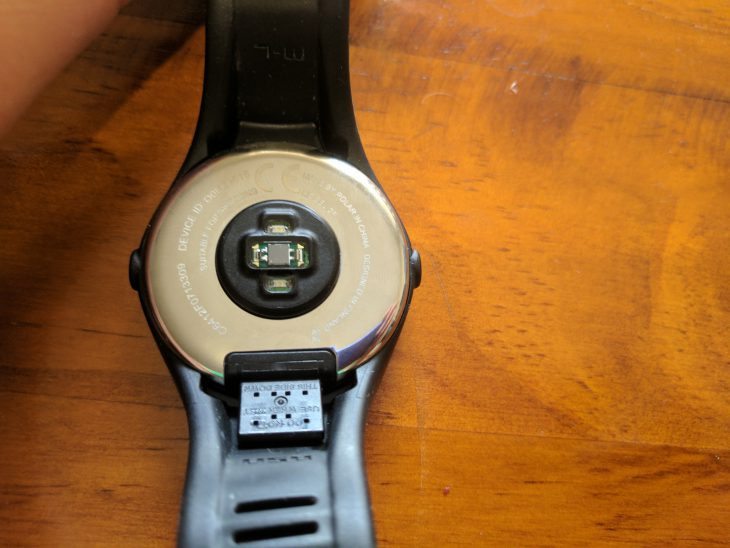
Polar has taken into account that sporty types don’t just stick to one activity, so the M200 is also waterproof if you want to go for a recovery swim after a big run. It’s only suitable for swimming, so no taking it on a deep sea dive.
A vibration motor is included to draw your attention when one of the smart notifications – like telling you to get up and move around – arrives. The vibration motor also kicks in when you’re in training mode and need notifications of lap times.
GPS
The biggest drawcard for the Polar M200 for runners at least is the GPS tracking ability. Polar has pretty good GPS technology, the M600 was stellar, but the M200 has been less than accurate on a number of occasions. The big difference in specs is the lack of GLONASS, but the difference in quality of tracking is noticeable when you’re actually going for a run/walk etc. I’ve often started the run tracking exercise and when reviewing the data later on it hasn’t begun tracking until half a kilometre into my run.
I tracked my runs with the Polar M200, M600 and my phone and while the phone tended to show drift left and right across the track, both the M200 and M600 showed a better representation of what I actually ran, though the M600 did manage to get a fast, accurate fix and tracked the run from start to finish.
Battery
The Battery life of the M200 is fantastic. Coming from using several Android Wear watches I`m used to charging my watch once a day, with the M200 that’s no longer something you have to do. I used the M200 as a step tracker only and after 3 weeks I had barely made a dent in the battery. You’re missing out a lot of features like notifications, colour touch screen etc. that you get on Android Wear watches but if you’re not into that then this is good.
Once I started going for a run and using the GPS however I killed that battery real good in about a week, that was running every day and tracking a half hour run on GPS. Recharge time is about an hour or two, so it’s not an overly onerous task to do and having a USB connector on the watch simply means you plug it into a spare USB port on your PC while you work and you’re done.
Watch UI
The watch face itself is pretty good, the time is big and easy to read for the most part, and a date display up the top is also there’s also a visual display of your daily activity through the day which shows up as a line of dots running around the watch face that grows as you take steps. A battery indicator on the watch face makes it easy to glance at and gauge how far you have left there too.
Using the watch is pretty straight forward once you work out the two buttons – basically long press to select, short press to move to the next selection. On the watch itself you can select your workouts, view the current status of your day in terms of your activity goals – steps taken, how long you have to go to reach your goal etc. – and change settings if you need to.
It’s not totally intuitive having to use the watch interface, but a few wrong hits and you’ll get there.
Polar Flow
The information is all displayed in your activity feed in the Polar Flow app on your phone, or you can also view it in the Polar Flow web service which adds in a bunch of different features. The web service is where Polar gets very clever, offering Polar Coach to help you train for specific events, like say if you wanted to start training for a 5K for beginners or maybe finally competing in a full marathon. Polar Coach can analyse where you’re currently at and then suggest how to get in training to meet your goals.
The Polar Flow app offers you a day, week or month view of your activity which is an easy to read, glanceable format. You get a pie chart for the day view, and bar graphs for the week and month. Each level of activity is easily distinguishable by a different shade of blue. In theory I’d prefer different, more contrasting colours to make it easier to view, but Polar has a colour style they’ve gone with – Blue – and they stick with it.
Once you track activities – Group Exercise, Running, Strength Training, Cycling, Other Indoor and Other Outdoor – they show up in the feed section. You can select each activity for a detailed breakdown of everything, heart-rate, steps taken etc. If you use the GPS you also get a map of your track. I lamented in the M600 review a lack of a way to export GPS data, but it turns out that you can do this within the Polar Flow web service you can export data as a TCX, CSV or GPX file.
While I`m not totally into using the various training or review options within the Polar Flow web service, it was handy to know it’s there.
There’s one activity set for the Polar that I’d love to see implemented and that’s swimming. I do a fair bit of swimming these days with my son learning to swim and also as rehab for various ailments (getting old and keeping fit sucks), so having no reliable way to track laps in the pool is a bit disappointing. The big focus is obviously cycling, running, walking etc. but it would be nice to get some support for swimming, especially in a watch that’s waterproof.
I also would like to see some more intense sleep tracking. There is in theory sleep tracking – it’s there, but unlike a number of other trackers it doesn’t give you stats on deep vs light sleep, it simply logs when you’re sleeping/resting or lying down. Given the long battery life of the M200, this is something that would be a great addition.
The major thing I missed when I took off my Android Wear watch was the lack of notifications. The M200 doesn’t support them. You get smart notifications from Polar such as ‘It’s time to move’ – and I need that when I`m on a twelve hour shift sitting behind a computer – but you don’t get a notification that an email has arrived, or your wife just called and yep, I`m in trouble for missing her calls again.

Conclusion
As a runner, the M200 is a revelation, it’s cheap yet functional with GPS and heart rate monitor built-in and for me that’s what I really want if I`m on a budget. The higher end offerings give better, more accurate hardware but you also pay for that and if you’re on a budget that’s not something you can always do. The M200 is comfortable, waterproof and offers a good mid-point for those not wanting to go the whole hog.
The software side of things is a little bit of a let down if you want notifications on your wrist from your phone, but again that’s going to push the price point up. The Polar Flow service is a great addition to a watch that’s on a budget, you get enough data from the sensors in the watch for Polar to offer you intelligent suggestions for where to go next on your fitness journey.
Polar has a solid name when it comes to fitness devices and the M200 continues the tradition, it’s a very good price and comes with all the features the fitness nut in your life could want. For me, I`m heading back to the M600 for the notifications, but if you’re in the market for a watch then this is definitely one to check out.
Disclosure Statement
Ausdroid has retained the Polar M200 to monitor firmware updates on the device moving forward.

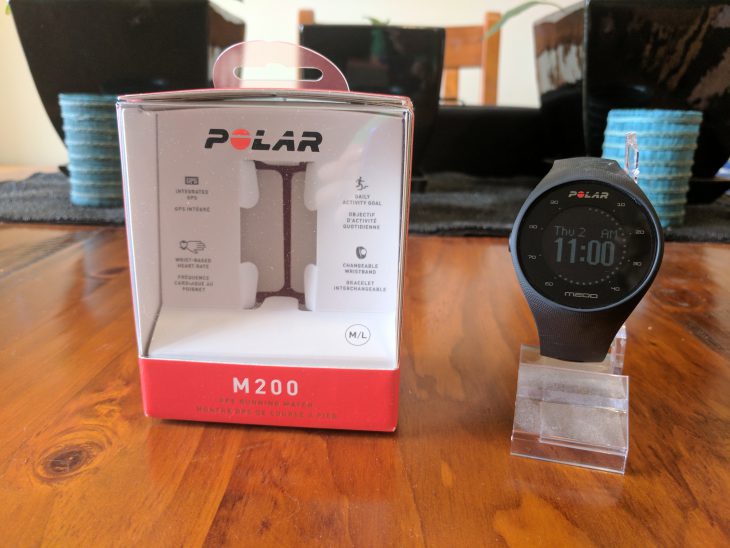
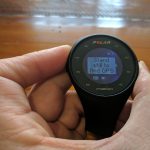

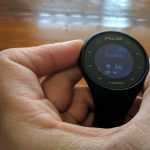


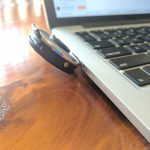

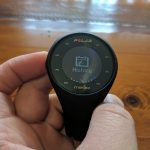
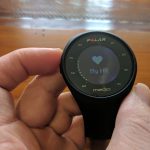
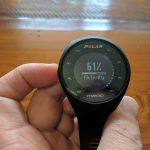
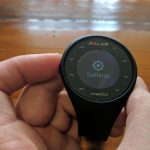

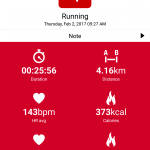
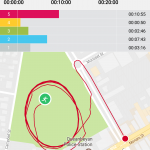
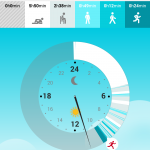

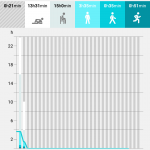



Thanks a lot for the review. Really in-depth. Appreciate it.
Does the watch have a silent(vibrating) wake up alarm? This is the one thing that is holding me back from purchasing this watch. I can’t seem to find anything on it.
I’ve heard you can set one with the Polar Flow App and was curious if you had screenshots of this function in the app?
Cheers
Mine cannot work fine. Fast drained of battery. I already contact the support, no reply.
“but well, if I`m running at night, I have other issues.”
In my world, I run at night because I have children. Not sure I’d get away with calling them “issues”. ;^)
I love my issue very much, he’s very cute.
One thing I’d love to know is, do you find the Flow app drains your battery? For me, it seems to prevent my phone from dozing. It doesn’t actually show up as a wake lock or that the Flow app is using a lot of battery, but if I compare my battery graph before and after installing the app, there is a distinct difference. Also, this does do notifications. Well at least the M400 does and looking at the Polar site is specifically says it does notifications, so I’d imagine they would work the same way given they are such… Read more »
No, hasn’t caused any power drains. Didn’t notice any with it installed.
I literally couldn’t get notifications on it. It has a whole switch to allow smart notifications, but damned if I could get them working.
What device are you using? I’m on a Nexus 5X.
That’s not a good sign. In the Flow app you go to Devices and there is a Smart notifications option below the device. Once that’s on, it should prompt you to grant notification permissions, but I tend to recall if you somehow dismiss that notification it doesn’t come back. But if you go to your phone’s settings and search for notification access, you should be able to toggle it for the Flow app and you should be in business.